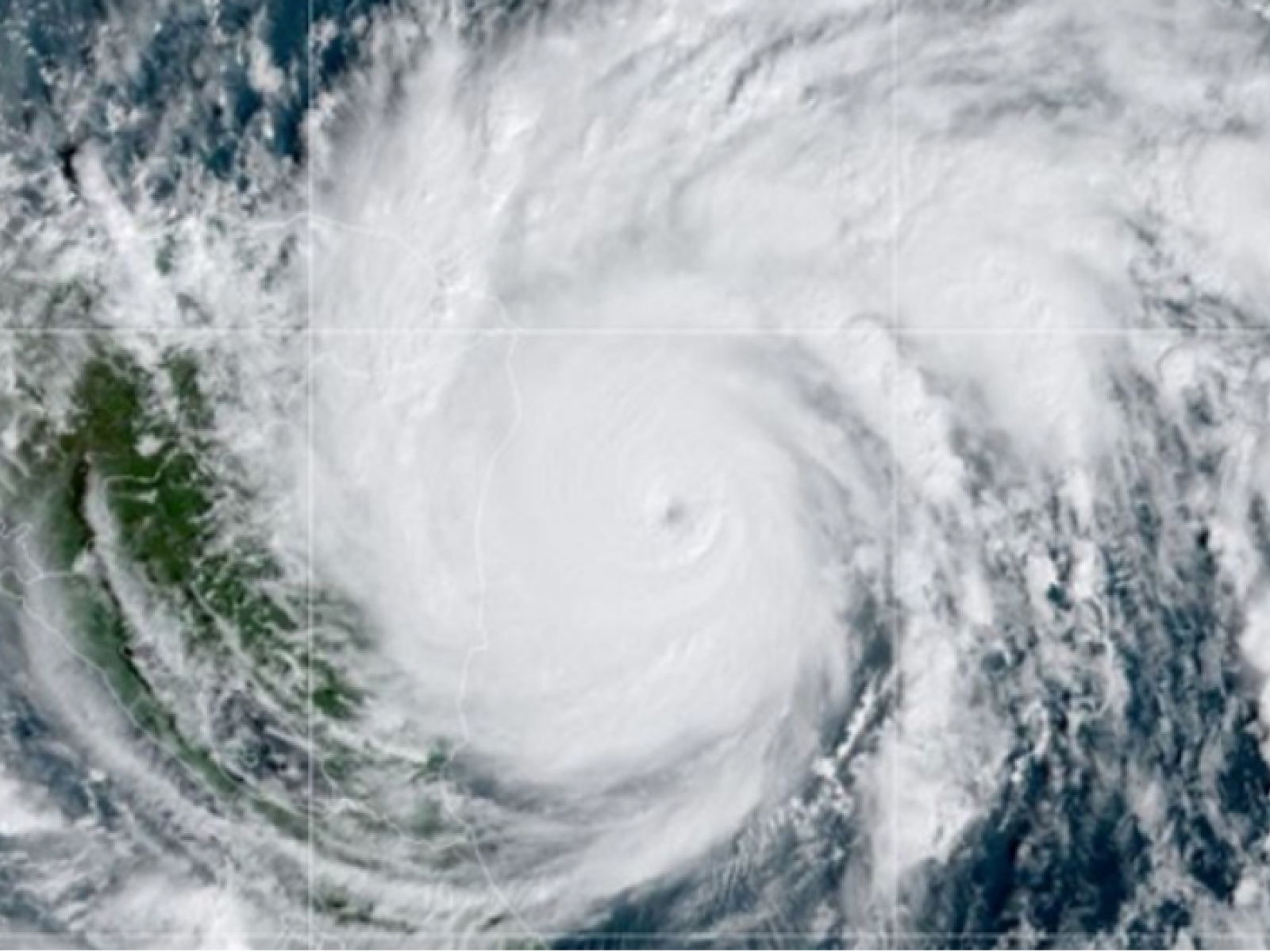Predicting the Intensity of Hurricanes
A new model accounts for co-occurring environmental parameters to improve predictions of a hurricane’s intensification

Accurate prediction of the rapid intensification of hurricanes remains a major challenge worldwide.
(Image: National Oceanic and Atmospheric Administration [NOAA])
The Science
Tropical cyclones (TCs) that undergo rapid intensification (RI) can pose serious socioeconomic threats and result in major damage to coastal areas. Predicting TCs remains a challenge, though, due to the complexity of various physical mechanisms that play a role in RI, as well as its relatively low probability of occurrence.
In this study, authors developed a new model based on co-occurring environmental parameters, or MCE, that determines the possibility of RI based on a simple count of the number of environmental predictors deemed favorable and unfavorable. When considered together, the sum of these environmental predictors reduce the number of false alarms compared to current modeling techniques.
The Impact
Through this novel methodology, researchers were able to gain a better understanding of how RI develops based on whether the large-scale environment was favorable or unfavorable. Unlike previous models that evaluate RI probability using the combined influence of a set of predictors, MCE individually evaluates parameters that encompass the large-scale environment, demonstrating lower false alarm rates and improving predictions of hurricane (or TC) RI.
Summary
TCs that undergo RI can pose serious socioeconomic threats and result in major damage to coastal areas. For instance, Hurricane Idalia underwent RI in the northern Gulf of Mexico during August 2023 and reached Category 4 strength before making a destructive landfall over western Florida. Similarly, Hurricane Otis underwent RI in the eastern Pacific during October 2023—its peak winds increasing by 185 km/h in a day before making a devastating landfall near Acapulco, Mexico.
In this study, researchers sought to reduce false alarm rates and improve probability of detection of RIs with a new modelbased on MCE.
MCE uses a simple count of the number of environmental predictors deemed favorable and unfavorable to predict an RI event. Researchers used the same environmental predictors to test MCE against two other well-known machine learning methods, and results showed that MCE was 14 percent more accurate than logistic regression- and decision tree-based models.
Contact
L. Ruby Leung, Pacific Northwest National Laboratory, Ruby.Leung@pnnl.gov
Funding
This research was supported by the Department of Energy Office of Science Biological and Environmental Research program as part of the RGMA program area.
Published: April 5, 2024
Narayanan A., K. Balaguru, W. Xu, L. R. Leung. 2023. “A New Method for Predicting Hurricane Rapid Intensification Based on Co-occurring Environmental Parameters.” Natural Hazards. [DOI: 10.1007/s11069-023-06100-z]